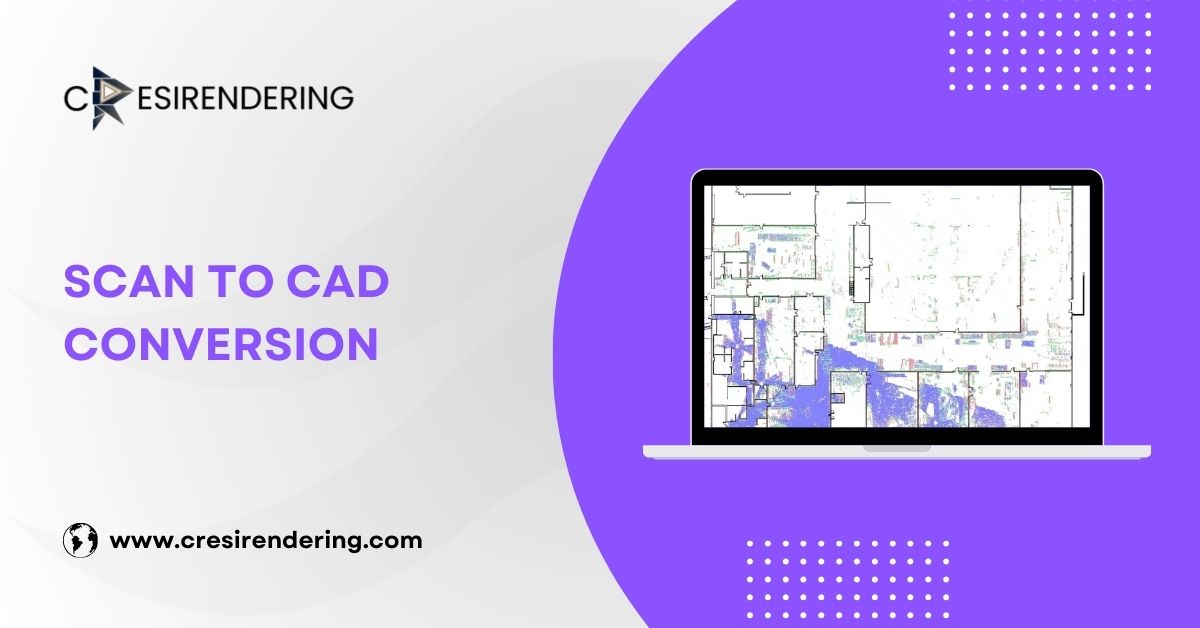
In the rapidly advancing world of design and manufacturing, Scan to CAD conversion has emerged as a pivotal technology, bridging the gap between physical objects and digital design.
This process allows for the precise digital recreation of real-world objects, facilitating enhanced design capabilities, reverse engineering, quality control, and innovation. But what exactly is Scan to CAD conversion, and how does it impact industries across the globe?
Understanding Scan to CAD Conversion
Scan to CAD conversion refers to the process of converting physical objects into precise digital models using 3D scanning technology and Computer-Aided Design (CAD) software.
The process begins with the scanning of a physical object, which creates a point cloud—a set of data points in space that represent the object’s surface. This point cloud is then processed to create a 3D model, which can be further refined and manipulated in CAD software.
The Importance of Scan to CAD Conversion
Scan to CAD conversion is a game-changer for various industries, particularly in design, engineering, and manufacturing. Here’s why:
1. Precision and Accuracy
Traditional methods of replicating physical objects often result in inaccuracies. Scan to CAD technology ensures high precision by capturing every detail of the object, down to the smallest surface imperfections.
This level of accuracy is crucial for industries like aerospace, automotive, and medical devices, where even a minor error can lead to significant issues.
2. Efficiency and Time-Saving
Manually creating CAD models from scratch can be time-consuming and labor-intensive. Scan to CAD conversion significantly reduces the time required to create accurate digital models, enabling faster project completion and quicker time-to-market for products.
3. Cost-Effective
By reducing the need for manual measurements and modeling, Scan to AutoCAD conversion helps save on labor costs and minimizes material waste. This cost-effectiveness is especially beneficial for small and medium-sized enterprises (SMEs) that need to optimize resources without compromising on quality.
4. Reverse Engineering
Scan to CAD is invaluable for reverse engineering processes. Whether it’s recreating an outdated part for which no CAD model exists or analyzing a competitor’s product, this technology allows engineers to deconstruct and improve upon existing designs.
5. Quality Control
Scan to CAD is increasingly being used in quality control and inspection processes. By comparing scanned models to their CAD counterparts, manufacturers can identify deviations, ensure products meet specifications, and maintain high standards of quality.
Read more:The Growing Importance of Point Cloud Modeling Services
How Does Scan to CAD Conversion Work?
The Scan to CAD conversion process involves several steps:
1. 3D Scanning
The first step involves scanning the object using a 3D scanner. There are various types of 3D scanners, including laser scanners, structured light scanners, and photogrammetry. Each type of scanner has its own strengths and is chosen based on the specific requirements of the project.
2. Point Cloud Generation
Once the object is scanned, the data is collected in the form of a point cloud. This cloud consists of millions of data points that represent the surface geometry of the object.
3. Mesh Creation
The point cloud is then converted into a mesh—a network of interconnected triangles that form the surface of the 3D model. This mesh can be refined and optimized to remove noise and inaccuracies.
4. CAD Model Conversion
Finally, the mesh is converted into a CAD model using specialized software. The resulting CAD model can be edited, modified, and used in various design and manufacturing applications.
Applications of Scan to CAD Conversion
Scan to CAD conversion is versatile and finds applications in numerous industries:
-
Automotive Industry: In automotive design, Scan to CAD is used for prototyping, reverse engineering, and quality control. It allows for the precise recreation of car parts, ensuring that they fit perfectly and function as intended.
-
Aerospace: The aerospace industry relies on Scan to CAD for the design and inspection of aircraft components. The technology ensures that parts meet stringent safety and performance standards.
-
Healthcare: In healthcare, Scan to CAD is used to create custom prosthetics, implants, and medical devices. The technology allows for the design of patient-specific solutions, improving outcomes and comfort.
-
Consumer Products: From household appliances to electronics, Scan to CAD conversion helps manufacturers design and improve consumer products. It enables the quick iteration of designs, ensuring products meet market demands.
-
Archaeology and Heritage Conservation: Scan to CAD is also used in the preservation and restoration of historical artifacts. By creating digital replicas, conservators can study and restore objects without risking damage to the originals.
Conclusion
Scan to CAD conversion is transforming how industries approach design, manufacturing, and quality control. By providing a bridge between the physical and digital worlds, this technology opens up new possibilities for innovation, efficiency, and accuracy.
Whether you’re an engineer looking to reverse-engineer a component, a manufacturer aiming to ensure product quality, or a designer seeking to create precise digital models, Scan to AutoCAD conversion is a tool that offers immense value.
As the demand for precision and efficiency grows, the adoption of Scan to AutoCAD conversion is likely to become more widespread, cementing its role as a cornerstone of modern design and manufacturing.
Also read: MEP 3D Modeling Services: Transform Future of Construction